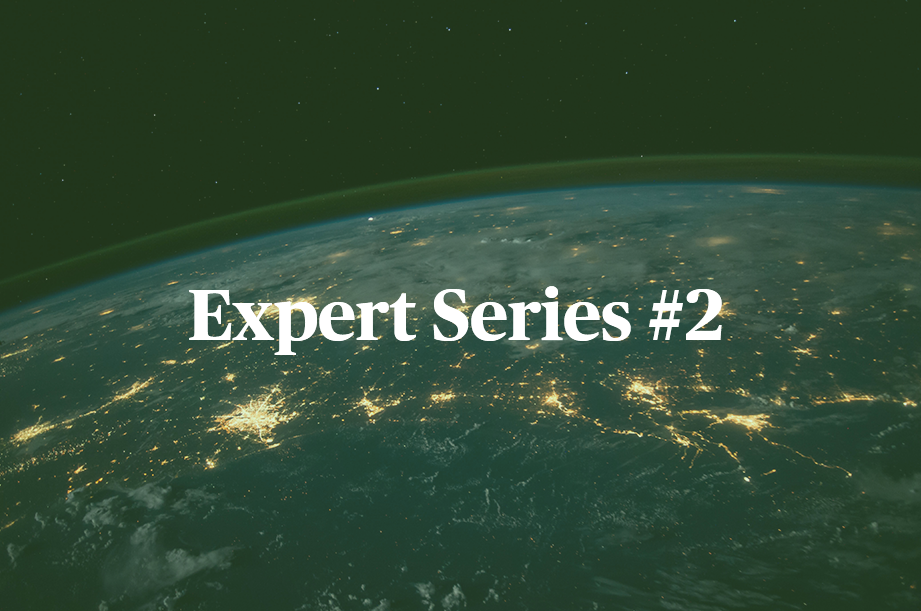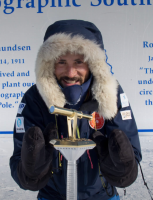Climate Change, Loss of Biodiversity and Epidemics: Causal Effects and Lessons for the Next Global Crisis

“What the current crisis has shown, if it was at all necessary, is how interconnected every issue on the planet is today,” points out Marie Bogataj, Head of the AXA Research Fund. “One of these elements of interconnection is much less known than the others despite being absolutely vital: it is biodiversity. While health and biodiversity may sound unrelated, the COVID 19 crisis is deeply connected to climate change and biodiversity loss.”
The AXA Research Fund has brought together nine of its most prominent chairholders to discuss the sanitary, economic, financial and environmental issues that will arise in the post-crisis world. In the second of a three-part expert series, three members of this COVID-19 Task Force provide insights into the inherent mechanisms that connect nature to human health, and the lessons that can be learned for the next global crisis.
How are climate change and biodiversity loss driving pandemics? Should we expect more in the future?
• Prof. Dirk Schmeller
It is a numbers game, really. We need to realize that since 1970, we have doubled the world’s population, and by doing so, we have decreased the living space of wildlife. We have harvested forests, destructed many landscapes. And in those landscapes, there are plenty of pathogens. Pathogens are very natural components; they are there to select against weak individuals. The moment we destruct biodiversity, nature, the environment, we get in touch with those pathogens or animals carrying those pathogens. There was always bushmeat consumption, but it is the increasing number of contacts which is driving these spillovers. We need to be aware that the current crisis is minor in comparison to climate change and biodiversity loss. Why? Climate change is a stress factor for everything, for ecosystems, for humans, for animals… Given that stress, we can only expect that the frequency of zoonoses, infectious diseases that spread to humans from nonhuman animals, will further increase in the future. We continue to open doors very wide for new pathogens to come in and cause trouble.
• Prof. Gerard Killeen
The short answer is yes; we should expect more pandemics. What I would like to add is that this is not new. This problem has been going on for quite some time. History tells us as much. Take the emergence of HIV. Simian immunodeficiency virus (SIV), the primate version of HIV, has been regularly infecting individual humans in Central and Eastern Africa for hundreds of years. But it’s only really in the second half of the 20th century that it became established as a human disease, through human-to-human transmission. The lesson to learn from this is that, even though it didn’t happen for hundreds of years, when it finally did, it happened three times in a row! Once things start to happen, they are going to happen regularly. And that’s going to be the case for a lot of new pathogens, like COVID-19.
Is this crisis a wake-up call? Does it present an opportunity to rethink the nature of our relationship with the ecosystems that sustain us, and to release the pressure our activities exert on them?
• Prof. Franck Courchamp
This crisis has shown to be deeply related to the biodiversity crisis. In this sense, it is indeed an opportunity to realize not only that we are having a direct impact on the ecosystems, but that we are having indirect impacts that come back to hit us like a boomerang. The sheer sanitary costs that we are experiencing with COVID-19, as well as the enormous economic costs that follow, should really make us realize that habitat destruction, overexploitation and transportation of species, biological invasions, industrial farming, and the increase of worldwide travels – before the crisis, one plane was taking off every second – all destabilize our environment and favor the spread of diseases. There are experiences and lessons that can be learned. China, for example, has already announced that they will ban wildlife food consumption, which I think is a major step forward. Similarly, I think that we should promote laws that ban wildlife transportation to slow down biological invasions, but also wildlife illegal trade. We also need laws that regulate deforestation, mining, industrial livestock farming, the three of which are favoring emergence of new diseases and therefore pandemics for humans.
• Prof. Dirk Schmeller
The issue of climate change has become more and more apparent to people, but biodiversity loss, not so much. This crisis could be an opportunity to bring the problem to the forefront. It could help people understand the One Health concept: everything is interconnected, the health of animals, the health of nature, the health of humans. Biodiversity is incredibly complex. Whatever state-of-the-art machines humans are building, they are always going to be simple in comparison. Today’s crisis shows the consequences of tampering with such a system, of not keeping it healthy. It is a clear demonstration that when species are lost, when natural barriers are eliminated, the whole engine that is biodiversity stutters, and with each shuttering, the risk of pandemics increases.
• Prof. Gerard Killeen
For many people on the planet, such pandemics have been somebody else’s problem until now. While this is the first time in a hundred years that an emerging pathogen has really reached out and touched all of us, there have been several such outbreaks over the last decade, like SARS1, MERS and Ebola, that were contained regionally before becoming global pandemics. Most of us have only been lightly brushed so far, but the worst may be ahead of us. There is a huge issue about how this challenges our humanity and the way we perceive what is important. This crisis once again shows us that we need to settle our national issues because we have a global challenge to undertake and we need to get on with it. We need to have international solidarity, which is difficult to reconcile with closing borders, but that is something we are going to have to do cooperatively. We also need to learn how to preserve biodiversity in manner that also minimizes risk of new pathogens emerging into humans. We need to adapt veterinary quarantine measures to human diseases; we need to control human pathogens at borders, and we need to be particularly careful of invasive species. The issue has been brewing for a long time, and it is just trouble waiting to happen.
What are the similarities between invasive species and zoonoses?
• Prof. Franck Courchamp
Both have a lot in common and can even be closely interconnected. As a reminder, invasive species are species that have been introduced by man, either accidentally or deliberately, outside of their native ecosystem, where they get established, spread and take over. Zoonoses are infectious diseases that spread to humans from nonhuman animals. Both invasive species and zoonoses have the same drivers. They are either driven by habitat degradation caused by human activities, or by the transportation of local species into new regions. The mechanisms are also similar. They are both characterized by the absence of common evolution between the newcomers and the local species, and therefore an absence of acquired defense mechanisms. There are similarities when it comes to consequences as well. Both have an ecological impact, and also dramatic sanitary and economic consequences. Both should be viewed as a consequence of our mismanagement of the environment and the deficiency of international trade regulations. There are lessons that can be learned, because both can and should be mitigated more efficiently with proactive planning and international collaboration. Another way to look at the link between the two is that invasive species can themselves contribute to the spread of zoonotic pathogens worldwide. Some invasive species even include pathogens. The COVID-19 can be considered as an invasive species, because by definition, it is a species that comes from another region and has spread to regions that have not evolved to cope with it. Pathogens have been historically invading ecosystems for a long time. The first were plant pathogens, crop diseases, for example, which have had disastrous consequences for agriculture. There are also cases of invading species that are not pathogens but can spread pathogens. The tiger mosquito, for example, which is invasive in the South of France, can carry up to 30 different viruses, including the Yellow fever, Dengue and Zika. It should also be said that zoonoses do not threaten only humans, they threaten other animals, as well. For instance, grey squirrels from the USA are healthy carriers of a pathogen that is wiping out red squirrels in the UK.
Low and middle-income countries have more experience of such crises, what are the lessons we can learn from them?
• Prof. Gerard Killeen
It has been a huge privilege to work in Tanzania and other parts of Africa, and to learn the value of simply just not giving up. For people working in national malaria control programs and HIV programs all over Africa, the odds always act against them. If you come from the outside, and you are not used to it, you are tempted to give up, but, you know, I have seen 10 million bed nets distributed in a day; I have seen cholera outbreaks contained. It involved all restaurants and informal food outlets being shut, it involved bans on the serving of food outdoors… I am very conscious of the fact that the Nigerians saved the world from Ebola back in 2014 when they traced over 500 people across the huge metropolis and travel hub that is Lagos. All kind of things are possible. It is easy to find the empty half of the glass, but we really need to focus on the full half and look at all the great successes that have happened in public health. There is a huge number of success stories in global health, particularly in some of the poorest countries. They are used to hardship and know what a really big problem looks like. I will put it this way, this is not my first lockdown, but this is by far the most comfortable one. So, to answer your question, there is a lot to learn particularly from low and middle-income countries.
In what way is this pandemic different from others, and why was a global lockdown necessary?
• Prof. Gerard Killeen
I normally work on malaria, but I have put this on hold, and I am currently working on coronavirus pathogen transmission modelling. In many ways, there are challenges with the coronavirus that are familiar to us in the malaria field. The first is that an awful lot of people who have the disease, they either don’t know it, or it’s mild enough that they shrug it off. That causes a problem unlike epidemics such as Ebola. People with Ebola get very sick, and it’s easy to pick up cases through epidemiological surveillance. However, when most cases are very mild, or even have no symptoms, it means they tend not to be picked up, and even if you put in place a very active surveillance system, the problem is that these mild symptoms overlap with other very common pathogens. There were really great reports from our Chinese colleagues coming early in the epidemic to warn us about the very variable, non-specific nature of this pathology. If you wanted to trace even just the symptomatic cases, basically you would have to test everyone with any symptom of anything. What that means is that the interventions we normally think of – test, treat, trace contacts, etc. – are not going to work in this case. The same is true of malaria. The approaches we take have to be preventative and presumptive. They also have to be preemptive, meaning you have to stop the epidemic before it starts, to deal with the clusters before they arrive. If you cannot tell who is infected, you need to ask everybody to protect themselves and other people around them, the same way that we ask everybody to use a bed net to protect themselves and their neighbors against malaria. That means people are going to have to get used to doing weird things, like not going to the shop even though they feel fine, or not rubbing their eyes. These are conceptually difficult things to do.
April 2020


